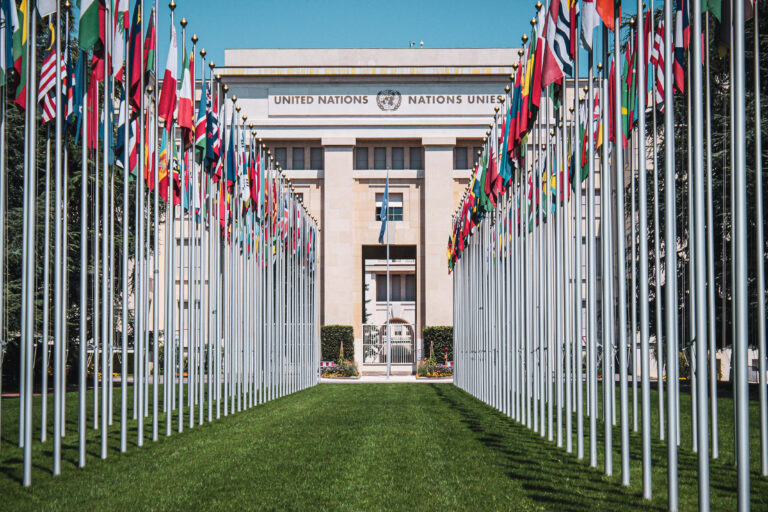October 19, 1999
Volume 1/ Number 21
Dear Friend and Colleague:
The term “reproductive rights” is the favored euphemism of today’s population controllers. But as political scholar Dr. Mary Meaney Haynes points out, this misleading term has its roots in the racist, eugenics
movement of the early part of this century.
Steven W. Mosher
President
Population Control and the New Global Racism
The population controllers’ “reproductive rights” agenda, which ostensibly aims at promoting “gender equality,” is actually directed at reducing populations in the developing world in the name of “family planning,” says political scholar Dr. Mary Meaney Haynes, (PRI Review, “The Latest Alibi,” October – December 1999).
“Waving banners of ‘women’s rights’ and ‘reproductive health,’ the population control lobby argues that family planning is critical to meeting large ‘unmet needs’ in the developing world,” which do not exist, writes Haynes. But “underneath the latest alibi of ‘reproductive rights’ and women’s health are the contentious issues of race and power.” Population control is premised on the racism and eugenics theories of Planned Parenthood founder, Margaret Sanger, who called for the sterilization of “genetically inferior races” (Margaret Sanger, Pivot of Civilization, New York: Brentano’s, 1922).
This ‘New Global Racism’, which normally lays hidden behind today’s feminist jargon, surfaced recently at a UNFPA briefing before the European Parliament in Brussels, in which demographer Jan Fransen remarked that the AIDS pandemic in Africa is helping to do the work of population control.
Fransen, a former UNFPA representative, told the European parliamentarians that population growth in Africa can indeed be limited by an increase in mortality rates; but warned that no politician could campaign publicly on such a platform. Fransen offered “fertility control” as an alternative, adding that this has been “UNFPA’s work since 1969,” (Austin Ruse, “UNFPA Briefing Makes Light of High Mortality in Africa,” 15 October 1999, C-FAM, Friday Fax). Fransen also made the extreme statement that the maximum carrying capacity of the Earth was between 700 million and 1 billion people.
In 1968, the eugenics movement — which after World War II was forced to be more guarded in public statements because of public outrage over the Holocaust — “regained some of its lost respectability,” Haynes writes, by adopting “the doomsday metaphor of choice” for population control activities, encapsulated in Paul Ehrlich’s The Population Bomb.
Ehrlich’s prophecies of massive famine and resource depletion failed the test of time. Throughout the 1970’s and 80’s, moderate population growth was met worldwide with record crop yields, reductions in pollution, increased economies and swelling GNPs. In the early 90’s, forced abortions and sterilizations were linked inextricably with the population controllers’ use of targets and quotas. Recently, the population controllers have adopted “reproductive rights” as their rallying cry to obtain the same end.
“The arguments [of the population controllers’] change with time and circumstance,” Haynes writes, “but the ‘solution’ remains remarkably familiar: ever more population control directed at the poorer, darker peoples of the developing world.”
Indeed, UNFPA’s recent media campaign, which focused on the date of 12 October 1999 (the UN Population Division’s projected “birthday” for the world’s six billionth person), included fund raising pitches to donor countries “to promote… reproductive rights” in Africa and the rest of the poor and developing world (UNFPA Press Release, “Funds Needed to Sustain Reproductive Health and Rights as World Population Hits 6 Billion,” 22 September 1999).
However Haynes points out that a recent World Bank study, “openly acknowledges that most African women favor families of 6 to 9 children.” In much of the developing world, where demand for “family planning” and “reproductive health” education is sparse, “family planning” programs tend to be coercive, and at the expense of basic and maternal health programs, in order to achieve “results.”
“Given the vast sums that are pumped into population control programs each year,” Haynes concludes, “one would naturally expect donors to demand correspondingly high return on their investment.” But in most cases the “return” is heightened governmental corruption, economic stagnation, more attacks on the rights of women, and “…ultimately the arrival of fewer African, Asian and Latin American babies.”










